
Sukkot, commonly called the Feast of Tabernacles or in some translations the Festival of Shelters, and known also as the Feast of Ingathering, is a biblical Jewish holiday celebrated on the 15th day of the seventh month, Tishrei. During the existence of the Jerusalem Temple, it was one of the Three Pilgrimage Festivals on which the Israelites were commanded to perform a pilgrimage to the Temple.

The Six-Day War, also known as the June War, 1967 Arab–Israeli War, or Third Arab–Israeli War, was fought between 5 and 10 June 1967 by Israel and the neighboring states of Egypt, Jordan, and Syria.
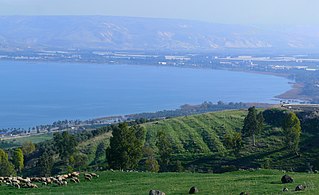
The Sea of Galilee, Lake Tiberias, Kinneret or Kinnereth, is a freshwater lake in Israel. It is the lowest freshwater lake on Earth and the second-lowest lake in the world, at levels between 215 metres (705 ft) and 209 metres (686 ft) below sea level. It is approximately 53 km (33 mi) in circumference, about 21 km (13 mi) long, and 13 km (8.1 mi) wide. Its area is 166.7 km2 (64.4 sq mi) at its fullest, and its maximum depth is approximately 43 m (141 feet). The lake is fed partly by underground springs but its main source is the Jordan River, which flows through it from north to south and exits the Sea at the Degania Dam.
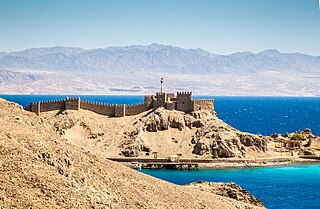
Taba is an Egyptian town near the northern tip of the Gulf of Aqaba. Taba is the location of Egypt's busiest border crossing with neighbouring Eilat, Israel. Taba is a frequent vacation spot for Egyptians and tourists, especially those from Israel on their way to other destinations in Egypt or as a weekend getaway. It is the northernmost resort of Egypt's Red Sea Riviera.

The sand cat, also known as the sand dune cat, is a small wild cat living in sandy and stony deserts far from water sources. With its sandy to light grey fur, it is well camouflaged in a desert environment. Its head-and-body length ranges from 39–52 cm (15–20 in) with a 23–31 cm (9.1–12.2 in) long tail. Its 5–7 cm (2.0–2.8 in) long ears are set low on the sides of the head, aiding detection of prey moving underground. The long hair covering the soles of its feet insulate its foot pads against the extremely hot and cold temperatures in deserts.

A subshrub or dwarf shrub is a short woody plant. Prostrate shrub is a related term. "Subshrub" is often used interchangeably with "bush".
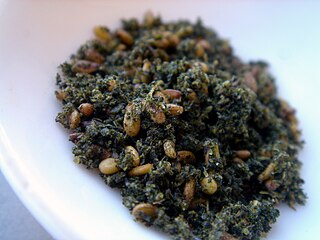
Za'atar is a culinary herb or family of herbs. It is also the name of a spice mixture that includes the herb along with toasted sesame seeds, dried sumac, often salt, as well as other spices. As a family of related Middle Eastern herbs, it contains plants from the genera Origanum (oregano), Calamintha, Thymus, and Satureja (savory) plants. The name za'atar alone most properly applies to Origanum syriacum, considered in biblical scholarship to be the hyssop of the Hebrew Bible. Used in Levantine cuisine, both the herb and spice mixture are popular throughout the Mediterranean region of Middle East.

The mountain gazelle or the Palestine mountain gazelle is a species of gazelle widely but unevenly distributed.

The Nubian ibex is a desert-dwelling goat species found in mountainous areas of northern and northeast Africa, and the Middle East. Its range is within Algeria, Egypt, Ethiopia, Eritrea, Israel, Jordan, Lebanon, Oman, Saudi Arabia, Sudan, and Yemen. It is historically considered to be a subspecies of the Alpine ibex, but is increasingly considered a specifically distinct species. The wild population is estimated at 1,200 individuals.

The marbled polecat is a small mammal belonging to the monotypic genus Vormela within the mustelid subfamily Ictonychinae. Vormela is from the German word Würmlein, which means "little worm". The specific name peregusna comes from perehuznya (перегузня), which is Ukrainian for "polecat". Marbled polecats are generally found in the drier areas and grasslands of southeastern Europe to western China. Like other members of Ictonychinae, it can emit a strong-smelling secretion from anal sacs under the tail when threatened.
Biodiversity in Israel, the West Bank, and the Gaza Strip is about the fauna and flora in the geographical region of Israel, the West Bank, and Gaza Strip. This geographical area within the region of Palestine extends from the Jordan River and Wadi Araba in the east, to the Mediterranean Sea and the Sinai desert in the west, to Lebanon in the north, and to the gulf of Aqaba, or Eilat in the south.
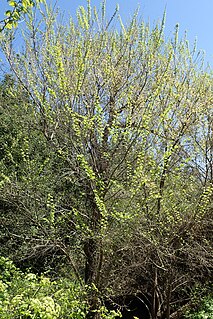
Ulmus minorsubsp.canescens is a small deciduous tree occasionally known by the common names grey elm, grey-leafed elm, and hoary elm. Its natural range extends through the lands of the central and eastern Mediterranean, from southern Italy, the islands of Sicily, Malta, Crete, Rhodes and Cyprus, to Turkey, and as far south as Israel, where it is now considered rare and endangered in the wild. The tree is typically found amidst the comparatively humid coastal woodlands and scrublands.

Israel, formally known as the State of Israel, is a country in Western Asia, located on the southeastern shore of the Mediterranean Sea and the northern shore of the Red Sea. It has land borders with Lebanon to the north, Syria to the northeast, Jordan on the east, the Palestinian territories of the West Bank and Gaza Strip to the east and west, respectively, and Egypt to the southwest. The country contains geographically diverse features within its relatively small area. Israel's economic and technological center is Tel Aviv, while its seat of government and proclaimed capital is Jerusalem, although the state's sovereignty over Jerusalem has only partial recognition.
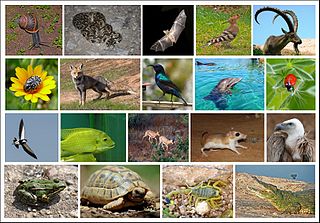
The wildlife of Israel includes the flora and fauna of Israel, which is extremely diverse due to the country's location between the temperate and the tropical zones, bordering the Mediterranean Sea in the west and the desert in the east. Species such as the Syrian brown bear and the Arabian ostrich have become extinct in Israel because of their loss of habitat. As of May 2007, 190 nature reserves have been established in Israel.

Günther's vole is a species of rodent in the family Cricetidae, also known by the name Levant vole. It is found in Bulgaria, Greece, Iran, Iraq, Israel, Jordan, Lebanon, North Macedonia, Serbia and Montenegro, Syria, Turkey, and Libya. In Libya, its natural habitats are temperate grassland, subtropical or tropical high-altitude grassland, and arable land. In Israel, it is common in lowland agricultural fields, in peak years becoming a major crop pest.

The bushy-tailed jird or bushy-tailed dipodil is a species of rodent in the family Muridae. It is the only species in the genus Sekeetamys. It is found in Egypt, Israel, Jordan, Saudi Arabia, and Sudan. Its natural habitat is rocky areas.
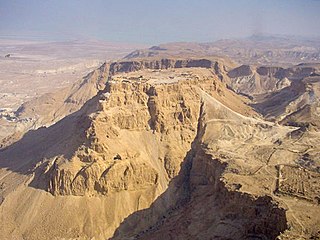
National parks of Israel are declared historic sites or nature reserves, which are mostly operated and maintained by the National Nature and Parks Authority. As of 2015, Israel maintains more than 400 nature reserves that protect 2,500 species of indigenous wild plants, 32 species of fish, 530 species of birds and 100 species of mammals.

The Persian fallow deer is a rare ruminant mammal belonging to the family Cervidae. Its taxonomic status is disputed, with some maintaining it as a subspecies of the fallow deer, while others treat it as a separate species, Dama mesopotamica.

Katinka's shrew is a species of mammal in the family Soricidae. It has been recorded from Israel, Syria, and Palestine, but it may now be extinct in Israel. It may also be present in southwestern Iran.

















